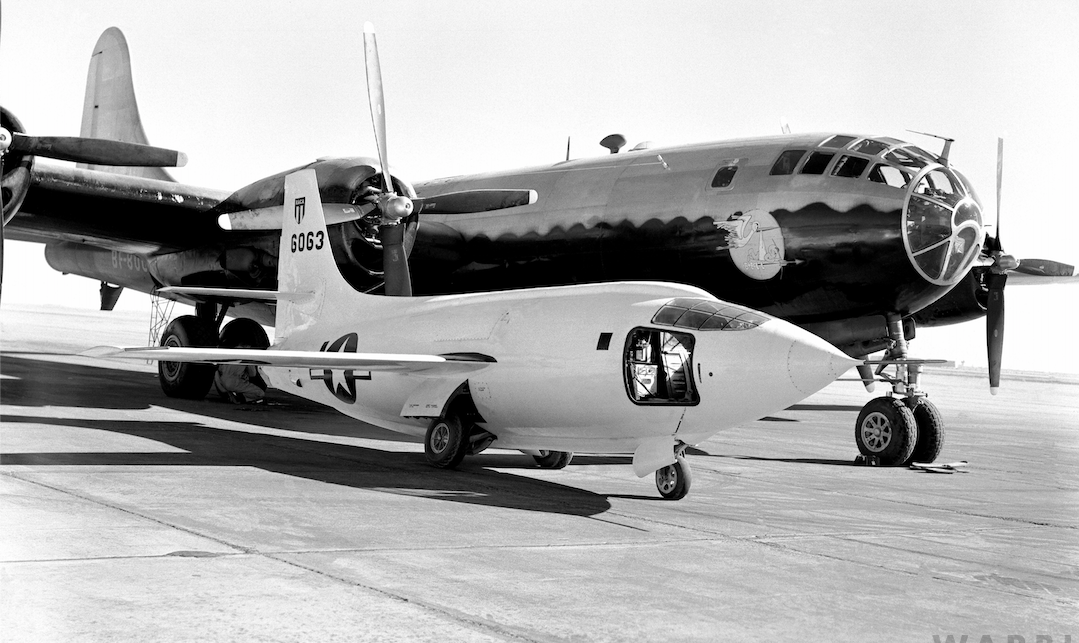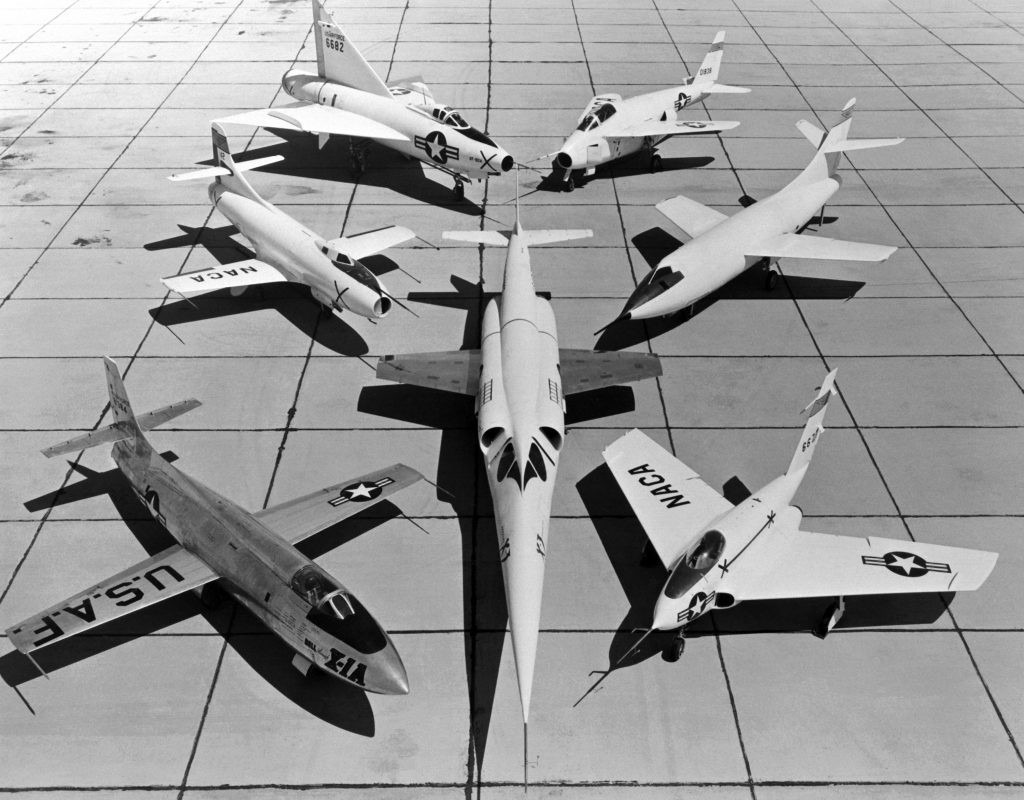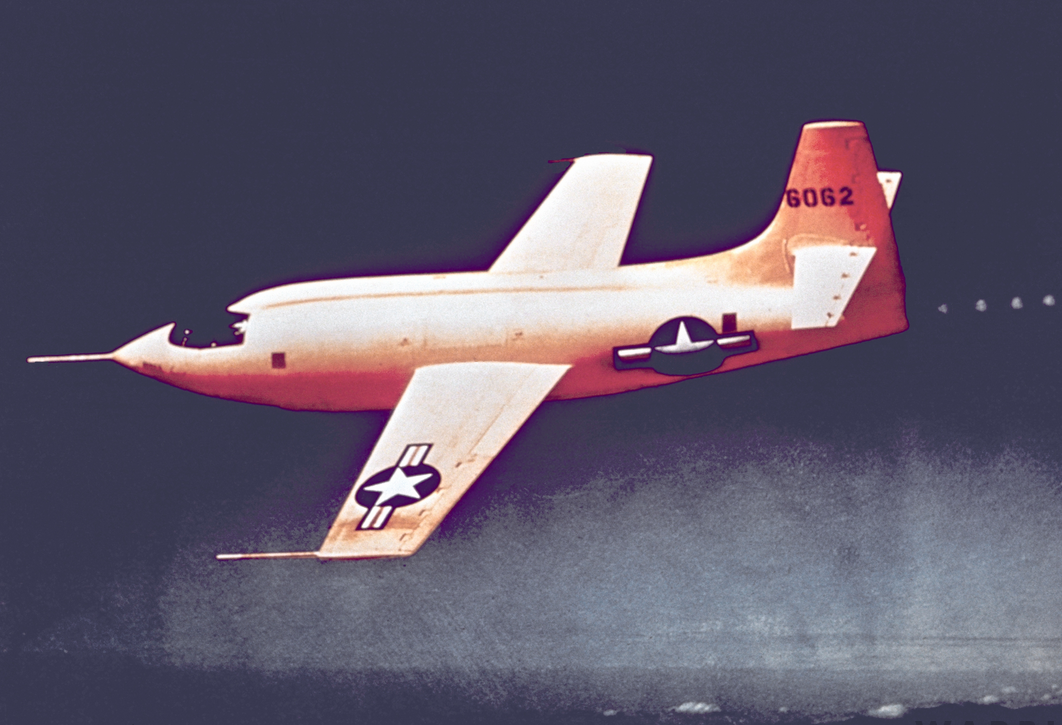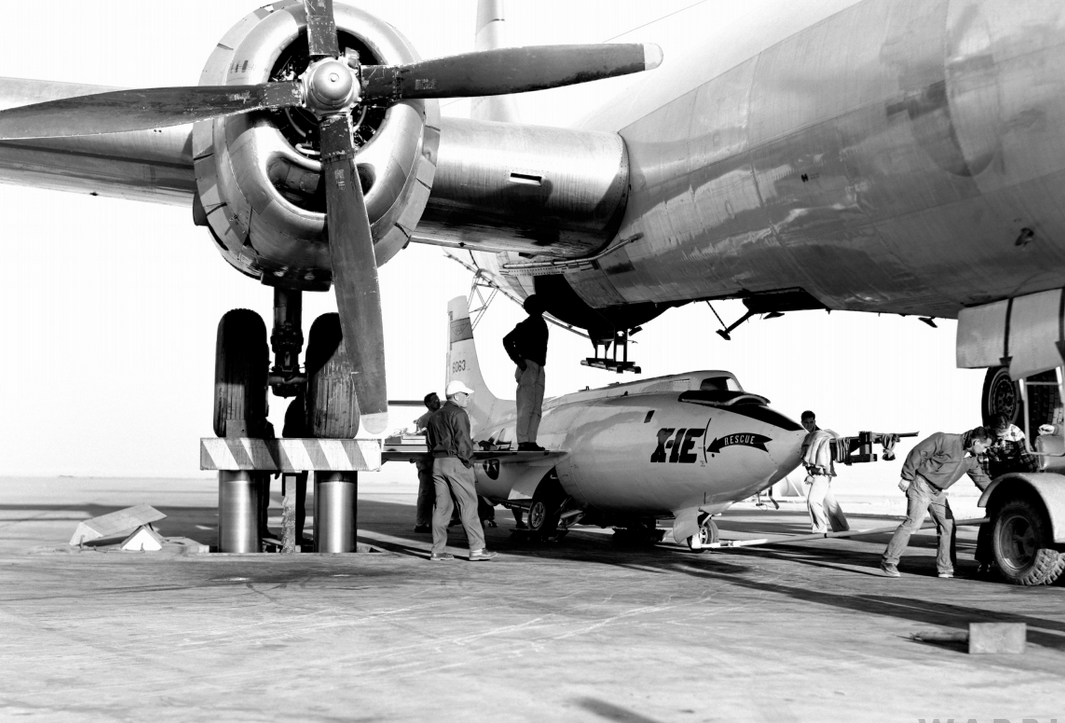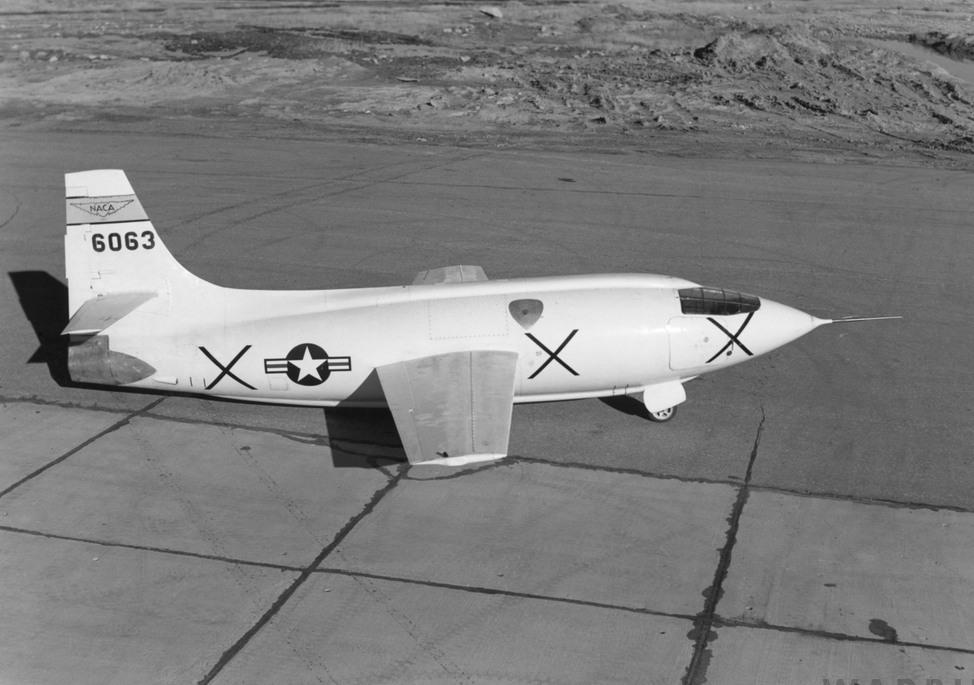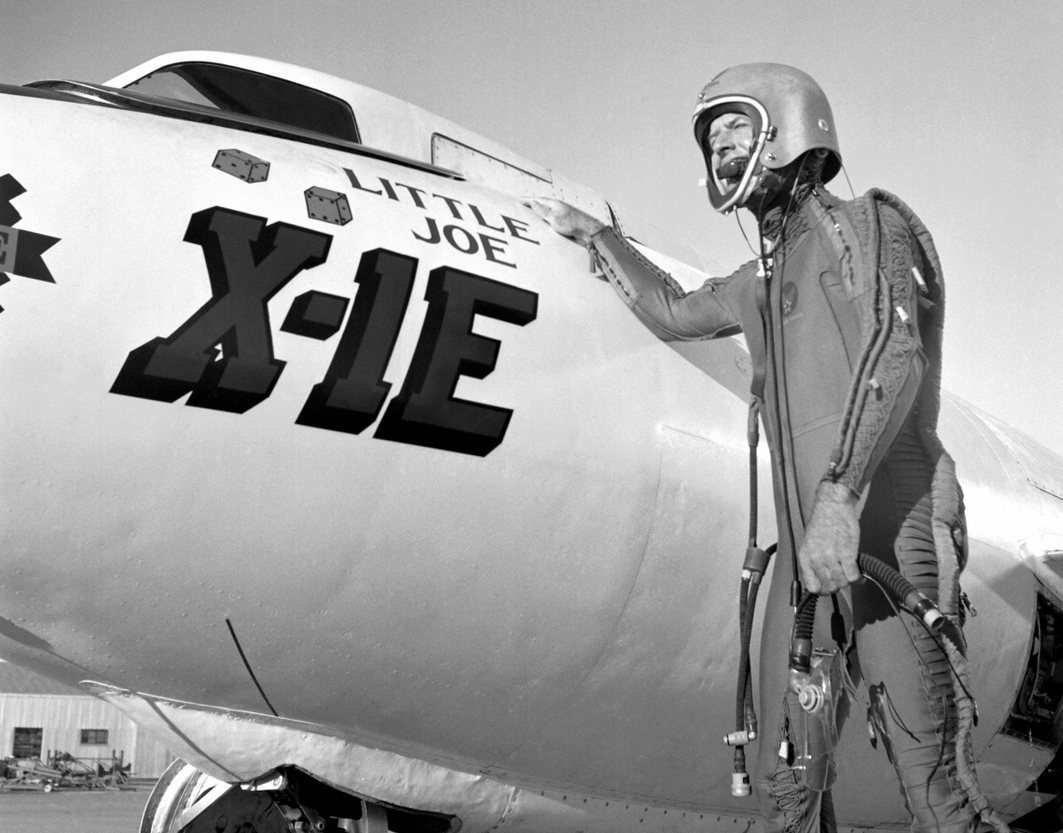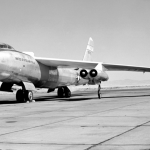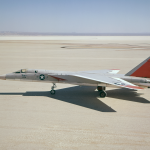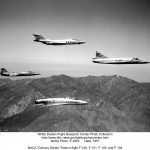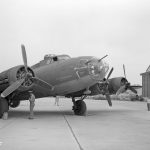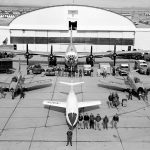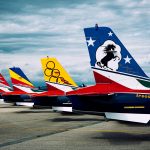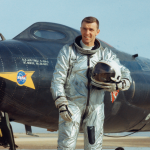A little while back, we began a series of articles looking at the air-test work which NASA and its forebear, the N.A.C.A., conducted at their facility in the Mojave Desert, located within the massive military test complex now known as Edwards Air Force Base. The civilian-run organization has often conducted its aerospace tests with active-duty military aircraft on bailment, with data shared back and forth to either help the U.S. aerospace industry, or the military itself.
For a while, it seemed the series of experimental aircraft sponsored by the U. S. government had run its course. Between the late 1940s and the late 1970s, almost thirty designations had been allocated to aircraft meant to explore new flight regimes or untried technologies. Then, largely, it ended. But there was a resurgence in the mid- to late 1990s, and as we enter the fourth year of the new millennia, the designations are up to X-50.
Many have a misconception that X-vehicles have always explored the high-speed and high-altitude flight regimes— something popularized by Chuck Yeager in the original X-1 and the exploits of the twelve men that flew the X-15. Although these flight regimes have always been in the spotlight, many others have been explored by X-vehicles. The little Bensen X-25 never exceeded 85 mph, and others were limited to speeds of several hundred mph.
There has been some criticism that the use of X designations has been corrupted somewhat by including what are essentially prototypes of future operational aircraft, especially the two JSF demonstrators. But this is not new—the X-11 and X-12 from the 1950s were going to be prototypes of the Atlas intercontinental ballistic missile, and the still-born Lockheed X-27 was always intended as a prototype of a production aircraft. So although this practice does not represent the best use of “X” designations, it is not without precedent. [AMERICAN X-VEHICLES An Inventory—X-1 to X-50.]
By Stephen Chapis
In the late 1940s and mid 1950s there were six X-1 rocket planes built by Bell Aircraft. For obvious reasons, X-1 USAF #46-062, the first aircraft, is the most famous of all because it was the first to break the sound barrier on October 14, 1947, with Captain Chuck Yeager at the controls. Six years later, Yeager made himself and the second-generation aircraft, X-1A USAF #48-1384, infamous when he tumbled out of control just after reaching 2.44 Mach.
However, the second first-generation X-1, USAF #46-063, made significant contributions to early high-speed research and had the longest career of any other X-1. Due to the first X-1 making a number of glide flights at Pinecastle Army Airfield (AAF), Florida, ‘063 was the first to arrive at Muroc AAF, California, when it was delivered on October 7, 1946. It performed the first X-1 flight at Muroc, a glide flight, on October 11, and the first powered flight of the X-1 program on December 9, with both flights performed by Bell test pilot Chalmers “Slick” Goodlin. The next notable flight for ‘063 occurred on March 10, 1948, when it exceeded the speed of sound for the first time. At the controls for the flight was NACA pilot Herbert Hoover, who took ‘063 out to 1.065 Mach, thus making him the first civilian to fly supersonic.
Throughout the remainder of 1948 and early 1949, the aircraft was fitted with special instrumentation and embarked on a series of NATA-sponsored control and stability flights. Beginning in May 1949, the aircraft made eleven flights to gather both transonic and supersonic data. These flights were flown predominately by Hoover and Robert Champine, also from NACA. On May 26, 1950, NACA pilot John Griffith flew the aircraft to its fastest-ever speed of 1.20 Mach.
Though ‘062 made 78 flights to ‘063’s 74, the former’s final flight took place on May 12, 1950, while the latter continued for a full fifteen months, making what turned out to be the last flight of a first-generation X-1 on July 31, 1951. Due to an issue with the high-pressure nitrogen spheres and the expected arrival of the third X-1, USAF #46-064, and Bell preparing the first second-generation aircraft, X-1D #48-1386, NACA chose to retire ‘063. However, both aircraft met similar early demises.
The third X-1 was the most advanced first-gen X-1 as it was fitted with a more capable propellant turbopump and a sturdier windscreen that didn’t require the use of reinforcing straps. The aircraft was delivered to Edwards (Muroc AFB was renamed Edwards AFB in May 1949) in April 1951, and it made its only flight, a glide flight with Bell test pilot Joseph Cannon at the controls, on July 20. On November 9, 1951, the aircraft and its B-50D mothership, USAF #46-006 were destroyed in a ground explosion and fire that nearly took the life of Cannon. Three months prior to this accident, on August 22, the X-1D was destroyed after it was jettisoned from the B-29 mothership following an in-flight explosion. The cause of these accidents wouldn’t be determined for several years, it was ultimately found that the Ulmer leather gaskets were not compatible with liquid oxygen.
Suddenly with no flyable X-1s, the Air Force and NACA pulled ‘063 out of retirement and had it modified by Bell Aircraft Corporation and NACA High-Speed Flight Station personnel at Edwards Air Force Base, as Muroc was renamed in 1949. Modifications included a new cockpit and canopy configuration, so it could be fitted with an ejection seat, which was taken from the second Northrop X-4, USAF #46-677. As originally equipped, ‘063 was fitted with a wing with a wing that had 10% thickness/chord ratio, as opposed to the 8% wing on the more famous, and faster, #46-062. The new high-speed wing, built by Stanley Aircraft, had a thickness/chord ratio of just 4%. At its root the wing had a thickness of just 3 3/8” and was fitted with 343 gauges to measure structural loads and aerodynamic heating.
The “new” aircraft, which had been re-designated X-1E, made its first glide flight on December 15, 1955, with NACA test pilot Joseph Walker at the controls. Walker would ultimately perform 21 of the X-1E’s 26 research flights. A total of eleven flights were conducted in 1956, with mixed results. Four were plagued by engine problems, and a hard landing on June 8, resulted in minor damage to the aircraft. The latter flight was also the X-1E’s first supersonic flight. It first Mach 2 flight took place on He took the August 31.
Five years later when Walker reached 354,200 feet in the X-15, that aircraft carried similar artwork – “Little Joe the II.” Walker is shown in the photo above wearing an early partial pressure suit. This protected the pilot if cockpit pressure was lost above 50,000 feet. Photo by NASA
The following year was again a myriad of high and lows. A landing accident on May 15, 1957, caused serious damage to the aircraft and repairs took four months. On October 8, Walker flew the aircraft to 2.22 Mach at nearly 72,000ft, which would not be the fastest speed achieved by the X-1E, but by any first-generation X-1.
In December 1957 twin ventral fins were installed to improve directional stability at high Mach number, but the first flight with this new modification would take place until May 14, 1958. Another landing accident on June 10 would ground the X-1E for three months, during which NACA made modifications that allowed the engines to operate at increased pressure. This modification in concert with a new experimental fuel, known as Hidyne or U-data, had the potential to make the X-1E a Mach 3-capable aircraft.
On September 19, 1958, NACA test pilot John B. McKay, made his first of four flights in the X-1E, Walker was back in the cockpit for a November 6 flight to test the U-data fuel. When Walker touched down on Rogers Dry Lakebed, no one knew it would turn out to be the final flight of the X-1 program. After the flight, the aircraft was already slated to be grounded so a new ejection seat could be installed. At the same time, x-rays of the fuel and oxidizer tanks revealed irreparable cracks.
Given that the North American X-15 was scheduled to fly the following year, the newly established National Aeronautics and Space Administration (NASA), decided to terminate the X-1E program. Except for the X-15, no other X-plane program contributed to high-speed research more than the X-1. Over the span of twelve years, the six X-1s conducted a total of 231 research flights. With apologies to the late-Tom Wolfe, the roster of pilots who strapped on these hurtling pieces of machinery and hung their hides out over the edge to push back the outside of the envelope read like a Who’s Who of early flight test research. They included Bell test pilots Tex Johnston, Jack Woolams, and Jean Zeigler, NACA/NASA pilots Neil Armstrong, Scott Crossfield, John McKay, and Joe Walker, and Air Force pilots Lieutenant Colonel Frank Everest, Major Arthur Murray, and Captains Jack Ridley and Chuck Yeager.
While the first X-1, famously named Glamorous Glennis, garnered all the fame for being the first aircraft to break the sound barrier, it was the second aircraft, Zero Six Three, that performed a majority of the program’s research flights. It flew a total of 100 flights (74 as X-1 and 26 as X-1E) and today, this unsung hero of the X-1 program is proudly displayed on a pylon in front of the main building (4800) at the NASA Dryden Flight Research Center, Edwards AFB, California.
Photos and historical information by Armstrong Flight Research Center







